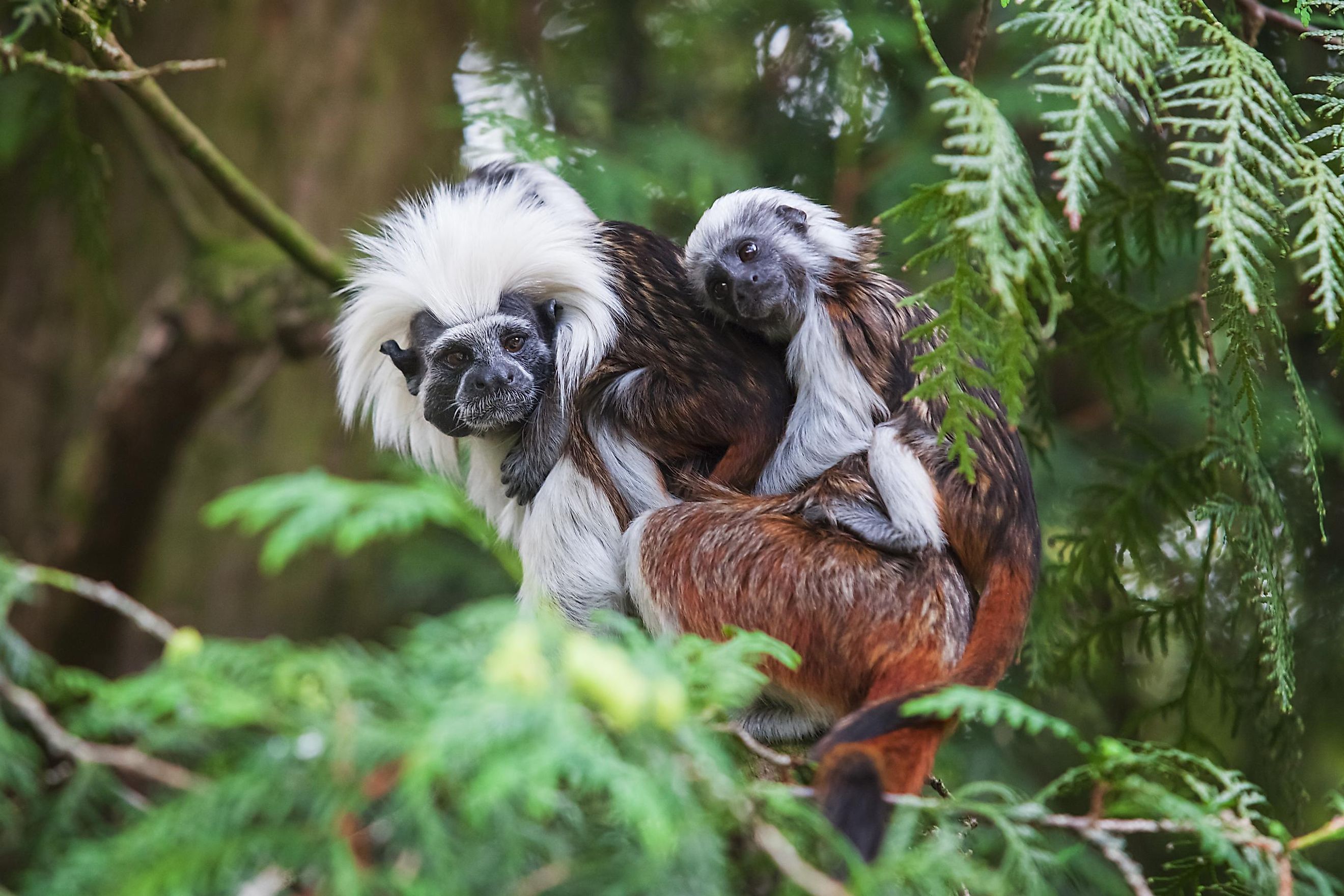
The 10 Most Biodiverse Countries In The World
Do you know that just 0.01% of the biomass on Earth consists of humans? We share our planet with amazing plants and animals that prevail in the total distribution of global biomass. If you are a nature enthusiast and want to explore the most biodiverse countries in the world, check out the list below for inspiration. Countries are ranked based on the Global Biodiversity Index by TheSwiftest.
What Is The Global Biodiversity Index?
The Global Biodiversity Index was calculated using six groups of living organisms - vascular plants, mammals, reptiles, birds, amphibians, and fish. The number of species of each group found in a country was compared to derive the biodiversity score. There are some caveats in this scoring system, as major groups like invertebrates were left out. Levels of endemism, intra-species diversity, size of a country, and its geographic location were also not taken into account.
1. Brazil - 512.34
- No. of bird species: 1,816
- No. of amphibian species: 1,141
- No. of fish species: 4,738
- No. of mammal species: 693
- No. of reptlilian species: 847
- No. of vascular plant species: 34,387
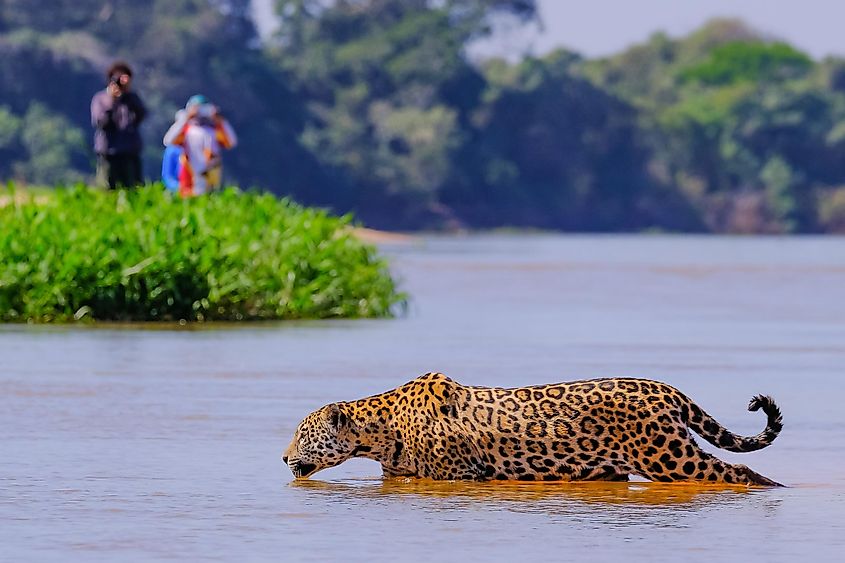
Brazil is the fifth biggest country in the world and the largest one in South America. Different climate zones and environmental conditions help Brazil to be the most biodiverse country in the world. It is home to between 15 and 20% of the world's biological variety. The most wonderful thing is that biodiversity in Brazil continues to grow, with new species discovered every year.
The greatest number of endemic species live in Brazil. Some rare animals you can meet here are tayras, rheas, tapirs, capuchins, maned wolves, tamarins, armadillos, and bush dogs. The majestic jaguar is Brazil's national animal. The Amazon rainforest hosts tall Brazil nut trees, myriad palms, brazilwood enlaced with creepers, rosewood, water lilies, orchids, and the wild rubber tree.
2. Indonesia - 418.78
- No. of bird species: 1,723
- No. of amphibian species: 383
- No. of fish species: 4,813
- No. of mammal species: 729
- No. of reptlilian species: 772
- No. of vascular plant species: 19,232
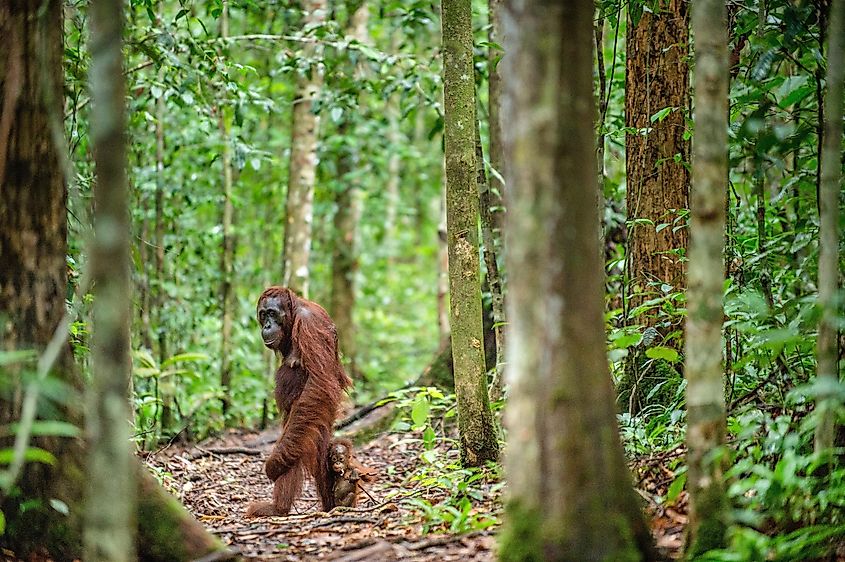
The archipelago of Indonesia contains thousands of islands. There are seven main biogeographic regions based on the largest islands and the surrounding waters. Indonesia boasts the third-largest rainforest in the world, as well as the well-known Coral Triangle.
Endangered species of Indonesian forests include Sumatran tigers, rhinos, and orangutans. Other rare and exciting animals you can find here are walking and tree-climbing mudskipper fish, Mahakam dolphins, and the Komodo dragons. The Rafflesia Arnoldi, or the Corps flower, is the largest, weighing around 15 pounds.
3. Colombia - 369.76
- No. of bird species: 1,863
- No. of amphibian species: 812
- No. of fish species: 2,105
- No. of mammal species: 477
- No. of reptlilian species: 634
- No. of vascular plant species: 24,025
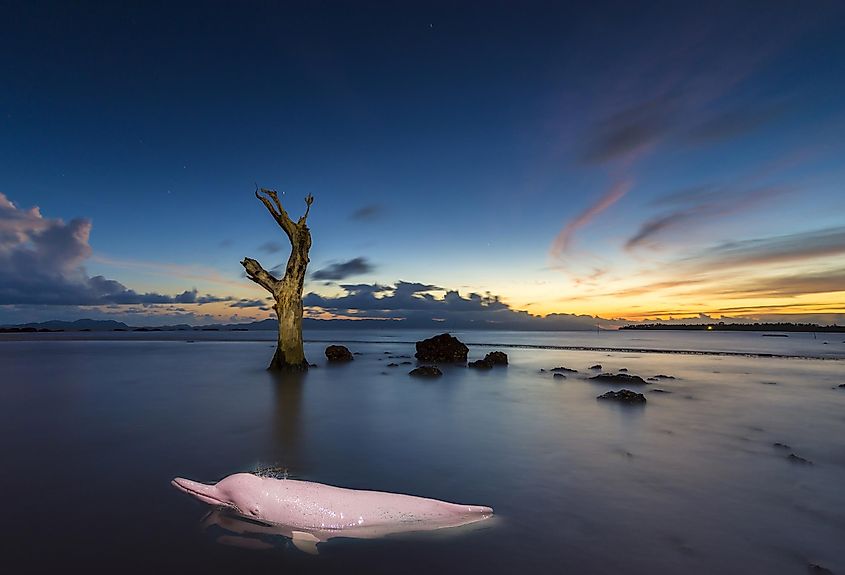
Within a few days in Colombia, one can travel from the desert to the alpine tundra while traversing rainforests, rivers, and the ocean. This country has more bird and orchid species than any other, and it ranks second in plants, butterflies, and freshwater fish species.
Such unique animals as the Colombian Titi monkey, the Andean cock-of-the-rock, the pink dolphin, the mountain tapir, the blue anole, and the pirarucu live here. Colombia is a blooming country with thousands of flowers. The ones that stand out are roses, orchids, and carnations. And orchid Cattleya trianae is a national Columbia flower.
4. China - 365.84
- No. of bird species: 1,285
- No. of amphibian species: 540
- No. of fish species: 3,476
- No. of mammal species: 622
- No. of reptlilian species: 554
- No. of vascular plant species: 31,362

China is the third biggest country on our planet. Its diverse array of landscapes hosts 10% of the plants and 14% of the world's animals. But a lot of species are on the verge of extinction. The detrimental effects on biodiversity have been made worse by the overuse and unregulated exploitation of biological resources.
The giant panda is unique and the most famous rare animal in China. It is under threat, as well as the Himalayan brown bear, dhole, snow leopard, and tiger. Only in China can you find the metasequoia, Cathay silver fir, Chinese cypress, golden larch, eucommia, dove tree, and camptothecin acuminata.
5. Mexico - 342.47
- No. of bird species: 1,105
- No. of amphibian species: 411
- No. of fish species: 2629
- No. of mammal species: 533
- No. of reptlilian species: 988
- No. of vascular plant species: 23,385
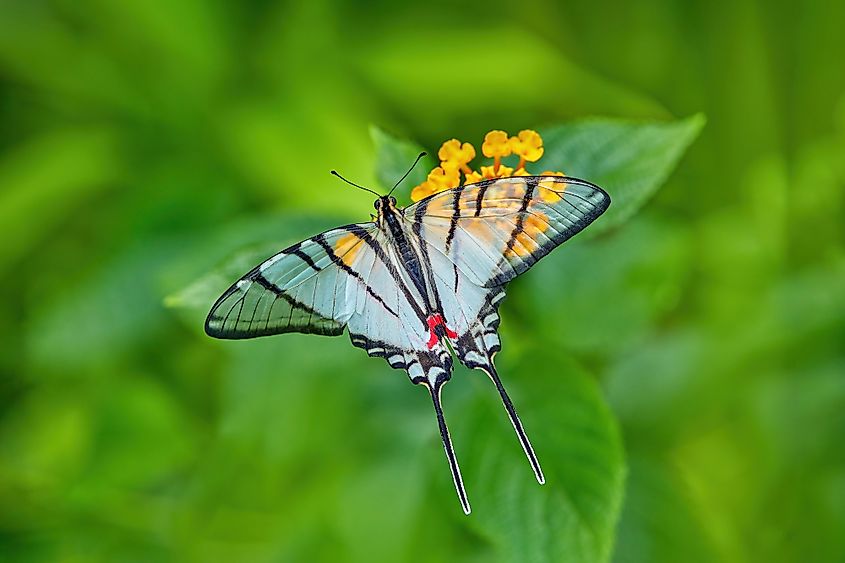
The following mega-diverse country is Mexico, with between 10 and 12% of the world's species. The country ranks third worldwide in terms of the diversity of mammals and second among reptiles.
There are a lot of endemic species in Mexico. For instance, the vaquita, the Cozumel raccoon, the blue-crowned motmot, the volcano rabbit, the axolotl, the Mexican agouti, or the black-throated magpie-jay are rare animals you can meet here. Some native Mexican plants are Mexican Sunflower (Tithonia diversifolia), Laelia Orchid, Pineapple Sage, Mexican Honeysuckle, Poinsettia, Mexican Marigold, etc.
6. Australia - 337.18
- No. of bird species: 725
- No. of amphibian species: 245
- No. of fish species: 4,992
- No. of mammal species: 355
- No. of reptlilian species: 1,131
- No. of vascular plant species: 19,324
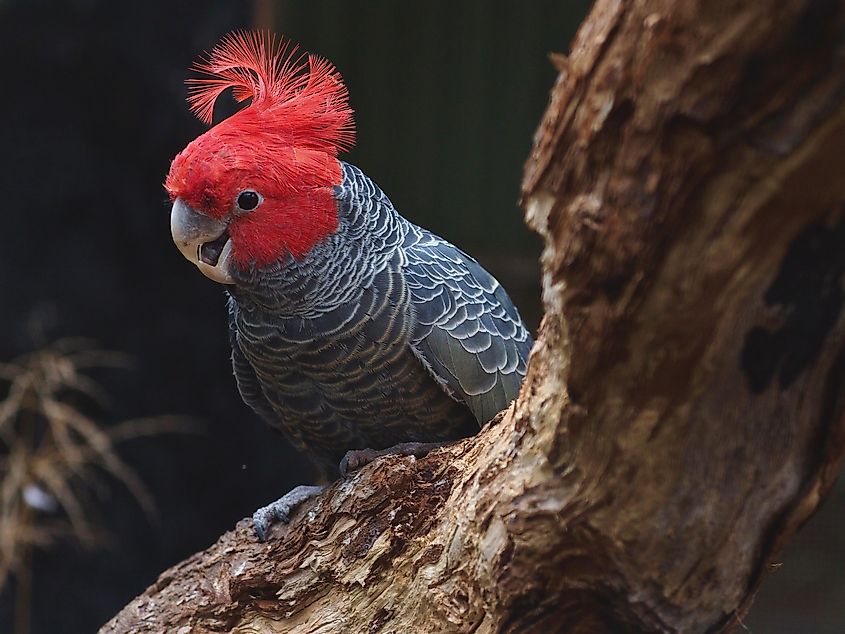
Australia is home to a variety of different ecosystems. Its geographical location habitats many unique species that could not live elsewhere on Earth. But many plants and animals face a severe threat because of deforestation.
The endemic animals you can meet here include the common ringtail possum, kangaroo, Parma wallaby, Tasmanian devil, galah, gang-gang cockatoo, and the Common wombat. And the rare plants you would be lucky to see are Gum trees (Eucalyptus), banksias, bottlebrushes, waratahs, kangaroo's paws, and spider flowers.
7. Peru - 330.12
- No. of bird species: 1,861
- No. of amphibian species: 655
- No. of fish species: 1,583
- No. of mammal species: 490
- No. of reptlilian species: 510
- No. of vascular plant species: 19,812
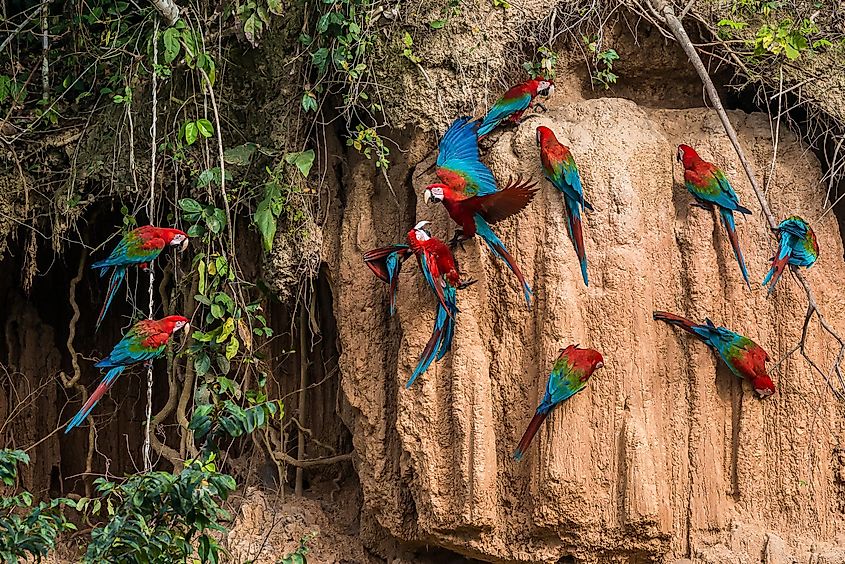
Peru possesses the second-largest Amazon forest on the planet, which accounts for 70% of all the biodiversity on the Earth. Peru is in the top five countries worldwide for amphibians, animals, and plants. It is second only to Colombia in terms of bird diversity.
75% of Peru's 122 threatened species are protected, demonstrating its commitment to safeguarding its endangered species. From the endemic animals, you can meet Peruvian piedtails, yellow-tailed woolly monkeys, mimic poison frogs, white-tufted sunbeams, Junin crakes, and tit-like dacnis. Native plant species include Machu Picchu Bamboo, Amazon Lily, Eucharis, Peruvian Sundew, Peruvian Wild Tomato, etc.
8. India - 301.63
- No. of bird species: 1,212
- No. of amphibian species: 446
- No. of fish species: 2,601
- No. of mammal species: 440
- No. of reptlilian species: 715
- No. of vascular plant species: 45,000
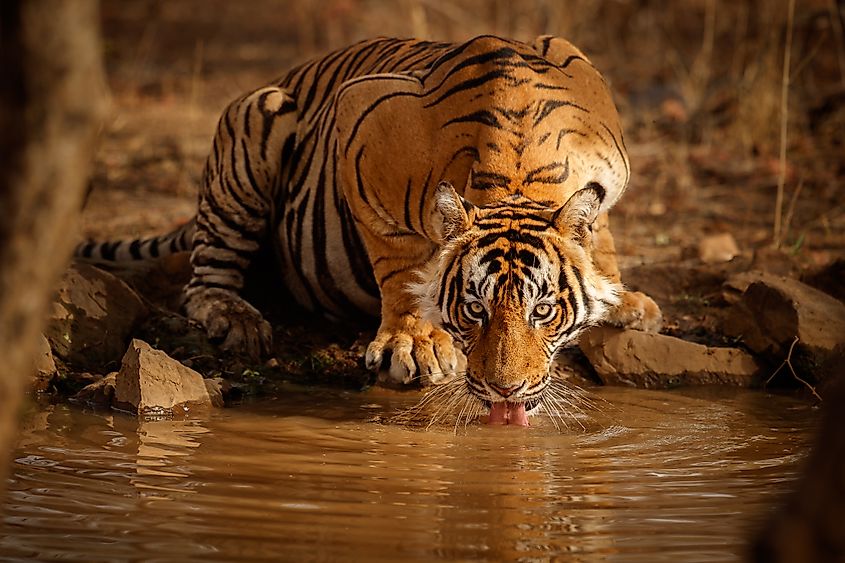
India occupies 2.4% of the world's land area and hosts 7-8% of all species. The country ranks fifth for reptiles, tenth for birds, and seventh for mammals in terms of biodiversity richness. Such endemic animals as the Asiatic lion, Kashmir stag, lion-tailed macaque, purple frog, sangai deer, and Nilgiri tahr live in India. Some of the most prominent rare plant species are Crotalaria shrirangiana, Tephrosia calophylla, Brachystelma penchalakonense, and Brachystelma gondwanense.
9. Ecuador - 291.58
- No. of bird species: 1,629
- No. of amphibian species: 659
- No. of fish species: 1,111
- No. of mammal species: 392
- No. of reptlilian species: 492
- No. of vascular plant species: 18,466

Thanks to its advantageous location in the Neotropics, Ecuador is a rich tropical area. Even though the size of the country is not so big, it has the most flora species per area compared to other countries in South America. Ecuador is home to 7% of the world's recognized mammal species and 18% of all discovered birds worldwide. The endemic fauna includes marine iguanas, Galapagos penguins, flightless cormorants, Galapagos hawks, and vampire ground finch. From the rare plants, you can find Dracula vampira, Bejaria subsessilis, Juglans neotropica, Gentianella longibarbata, and Polylepis microphylla.
10. The United States - 280.13
- No. of bird species: 844
- No. of amphibian species: 326
- No. of fish species: 3,081
- No. of mammal species: 531
- No. of reptlilian species: 556
- No. of vascular plant species: 15,500

The US has an astonishing array of habitats, ranging from tundra to tropical jungles, thanks to its enormous size. The country holds high positions in terms of fish species. You can meet such rare animals while traveling through the US: Mohave ground squirrels, Idaho ground squirrels, Utah prairie dogs, giant kangaroo rats, black-footed ferrets, and gopher tortoises. Among endemic plants are Nevada primrose, Nachlinger's catchfly, Arnica venosa, Frasera montana, and Hawaiin coastal sandalwood.
Tropical regions are the most biodiverse. Four of the listed countries are in South America. Amazon's rainforest is a top location to meet the most beautiful flora and fauna. Also, countries with vast territories in different climate zones can surprise you with diverse creatures. Save this list and plan your trip to one of the most biodiverse countries in the world.
The 20 Most Biodiverse Countries In The World
| Rank | Country | Biodiversity Index |
|---|---|---|
| 1 | Brazil | 512.34 |
| 2 | Indonesia | 418.78 |
| 3 | Colombia | 369.76 |
| 4 | China | 365.84 |
| 5 | Mexico | 342.47 |
| 6 | Australia | 337.18 |
| 7 | Peru | 330.12 |
| 8 | India | 301.63 |
| 9 | Ecuador | 291.58 |
| 10 | United States | 280.13 |
| 11 | Venezuela | 273.39 |
| 12 | Papua New Guinea | 226.57 |
| 13 | Myanmar | 221.77 |
| 14 | Vietnam | 216.97 |
| 15 | Malaysia | 214.71 |
| 16 | Democratic Rep. of the Congo | 214.43 |
| 17 | Tanzania | 213.10 |
| 18 | Bolivia | 209.55 |
| 19 | South Africa | 207.94 |
| 20 | Thailand | 200.77 |











